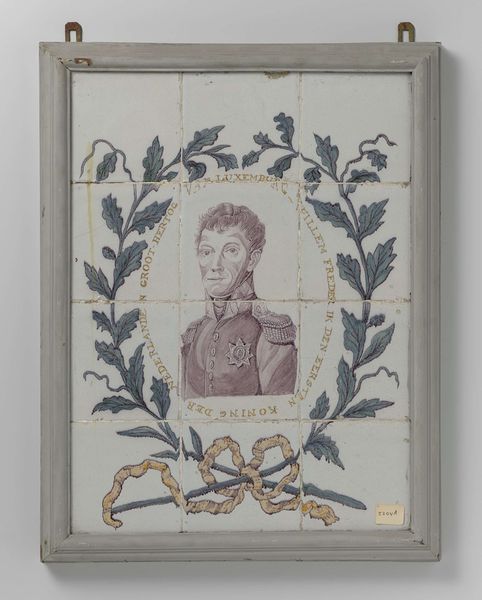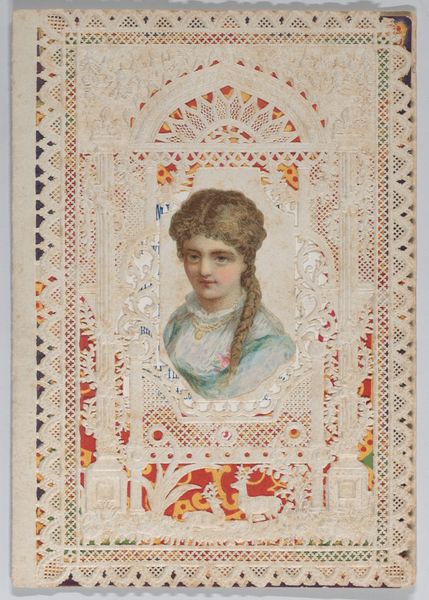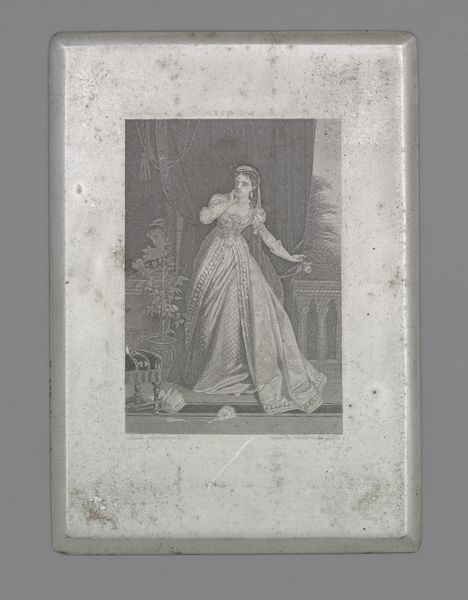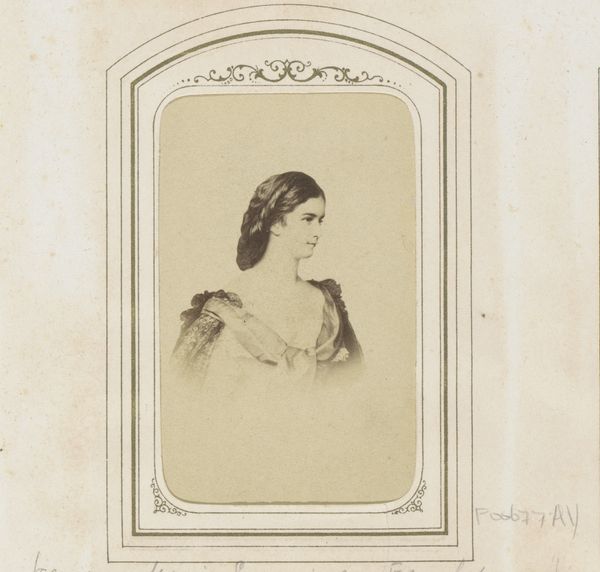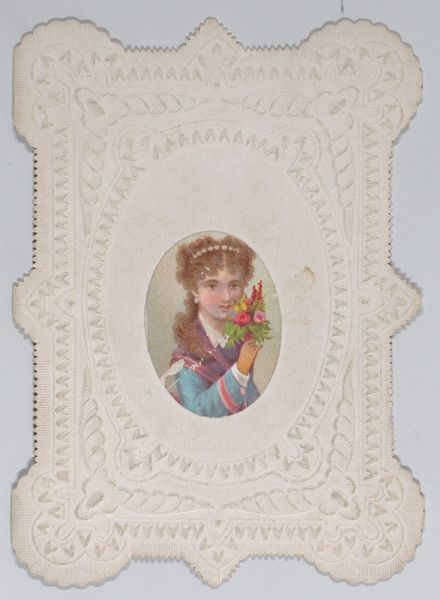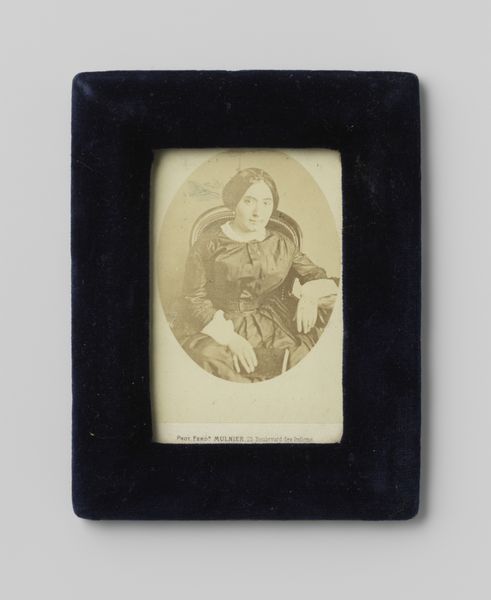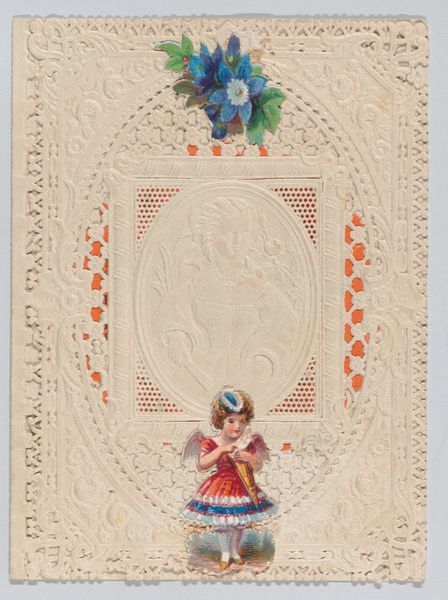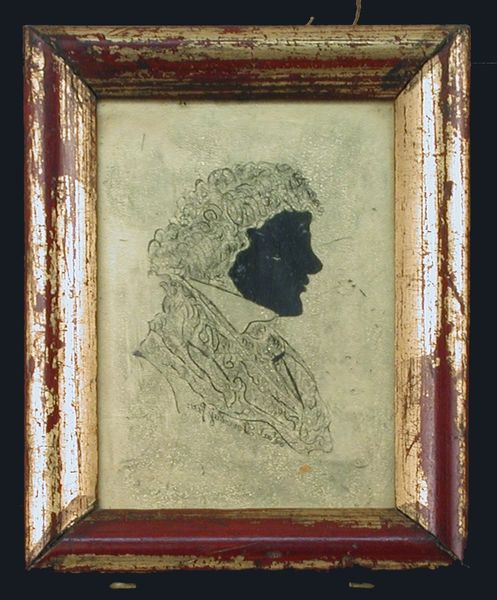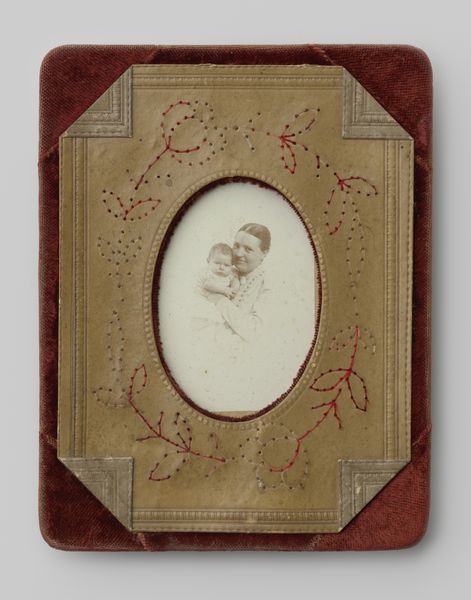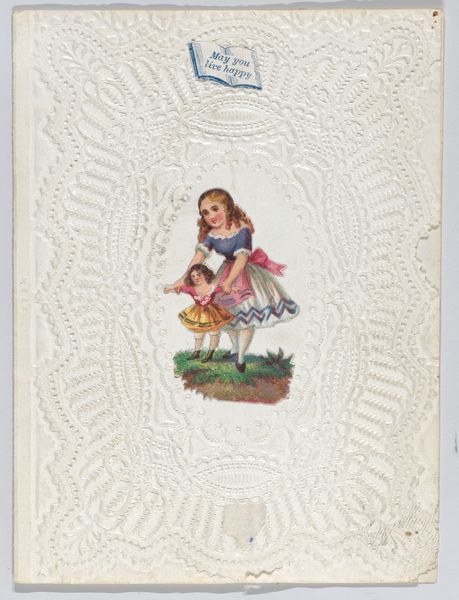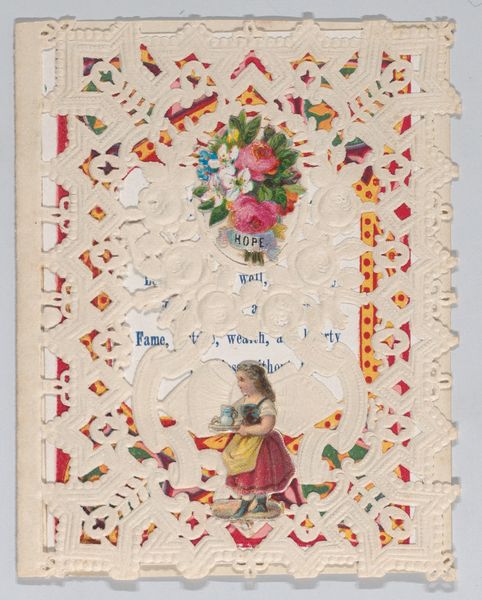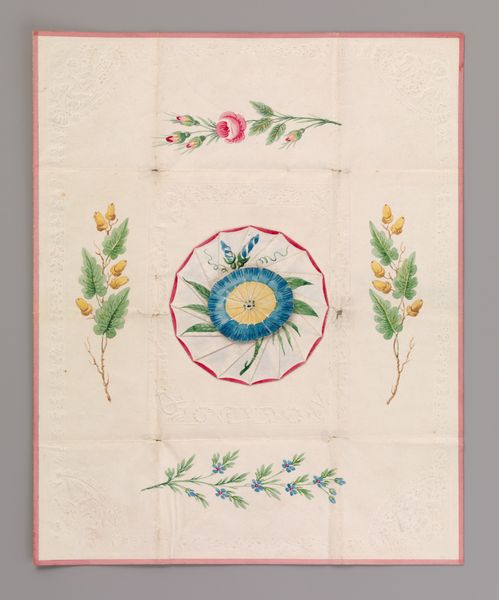
Tegeltableau met portret koningin Frederika Wilhelmina met opschrift: FREDERIKA LOUISA WILHELMINA VAN PRUISSEN GEMALINNE VAN WILLEM DEN EERSTEN 1815 - 1830
0:00
0:00
painting, ceramic
#
portrait
#
neoclassicism
#
painting
#
ceramic
#
tile art
#
history-painting
#
decorative art
#
watercolor
Dimensions: height 51 cm, width 38 cm, height 58.5 cm, width 45.2 cm, depth 4.7 cm
Copyright: Rijks Museum: Open Domain
Curator: Well, isn't this a charming artifact? We're looking at a tile panel portrait of Queen Frederika Wilhelmina, consort of William I. It was created sometime between 1815 and 1830. Editor: There's a gentle stillness to it. The limited palette of pale blues and ochres creates a very serene mood. A feeling of modest celebration maybe? Curator: Exactly. The piece blends formal portraiture with a certain domestic quality because it is created using ceramic tiles. Editor: It's interesting how the ceramic tile medium introduces both a grid and also, an element of repetition that's common in decorative art, but not in portraits. Curator: The tile grid also lends a modular and thus reproducible element. This allowed the image of the Queen, and therefore the monarchy itself, to be disseminated into a wider culture during a time when the newly formed kingdom sought popular approval. You will see the laurel wreath, the inscription, and even the decorative bow act as symbolic reinforcement. Editor: Right, symbols of stability and continuity in the wake of considerable upheaval, as Napoleonic Europe was redrawn. It makes me think about how the act of memorializing through image making plays into solidifying historical narratives. The portrait aims to humanize her, while the text clearly establishes her dynastic importance. Curator: I agree. And by placing her image on these tiles, this decorative, yet inherently practical object becomes a symbol of her influence extending into everyday life. The Queen is not presented as some unapproachable ruler, but someone present, constant. The piece almost transcends being just a representation of a person, evolving into a sort of emblem of the new Kingdom. Editor: Seeing this, I’m reflecting on how images can serve both as propaganda and as cultural artifacts that embed themselves in a society’s visual memory. An artwork like this illustrates how portraits became potent vehicles for shaping political landscapes. Curator: It makes one consider how we continue to represent and interpret leadership in our current moment.
Comments
No comments
Be the first to comment and join the conversation on the ultimate creative platform.
